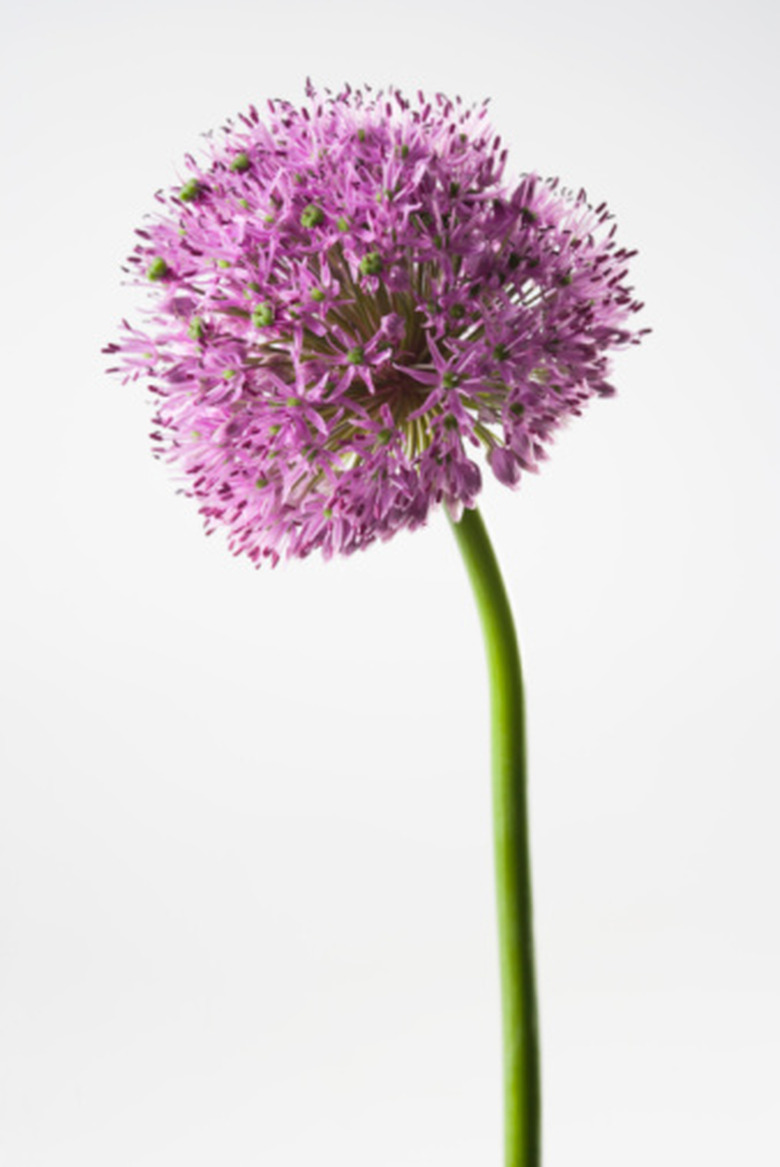When To Cut Alliums
If you've ever let your garden onions or garlic go so long they flowered, you already known what allium blooms look like – spherical heads of hundreds of tiny star-shaped flowers atop tall, hollow stems.
If you've ever let your garden onions or garlic go so long they flowered, you already known what allium blooms look like – spherical heads of hundreds of tiny star-shaped flowers atop tall, hollow stems. The genus allium contains some 500 species, most of which are native to the northern hemisphere, explains the Maryland Cooperative Extension. Most also smell faintly like their onion cousins, but only when you crush or bruise the vegetation. Allium species and cultivars grown for cut flowers, either fresh or dried, typically have long, sturdy stems and are cold-hardy perennials. How and when you harvest alliums depends on the species.
Growing Alliums
Kids love growing alliums – especially the gigantic varieties with soccer-ball-size flowers. Plant them in late summer or fall, in full sun and well-drained soil enriched with organic matter. Dig planting holes 3 inches deep and 6 to 8 inches apart. Place bulbs in the holes pointed end up, cover them with soil and water well, although rains will provide most of the irrigation; water sparingly during growth and flowering. Leave vegetation in place after flowering so bulbs take back as much food energy as possible from the fading foliage before going dormant.
- If you've ever let your garden onions or garlic go so long they flowered, you already known what allium blooms look like – spherical heads of hundreds of tiny star-shaped flowers atop tall, hollow stems.
- Place bulbs in the holes pointed end up, cover them with soil and water well, although rains will provide most of the irrigation; water sparingly during growth and flowering.
Cutting Alliums for Cut Flowers
Cut alliums with a very sharp knife or razor to avoid crushing or otherwise damaging stems. Place them in fresh, clean water. Recut alliums outdoors or in a sink, because the cut ends of some species – especially Allium giganteum — exude a clear fluid that oxidizes to a blood-red color that permanently stains countertops and sometimes floors. Add 1/2 tsp. of bleach per quart of vase water, to deter bacteria; do not add sugar or floral preservatives.
Harvesting Flower Heads When Half Open
The general advice to home allium growers is to cut them when flower heads are one-fourth to one-half open, because flowers will continue to open in the vase – a practice that extends the vase life of flowers. University of Maryland Extension recommends cutting Allium aflatunense, Persian onion; A. caeruleum, blue globe onion; and A. sphaerocephalon, also known as drumstick allium or round-headed garlic, in late spring or summer when flowers are 50 percent or half open. Both blue globe and drumstick alliums are considered summer bloomers.
- Cut alliums with a very sharp knife or razor to avoid crushing or otherwise damaging stems.
- The general advice to home allium growers is to cut them when flower heads are one-fourth to one-half open, because flowers will continue to open in the vase – a practice that extends the vase life of flowers.
Harvesting Flower Heads When Fully Open
University of Maryland Extension recommends cutting flowers of Allium christophii, also known as stars of Persia, and Allium giganteum or giant onion in late spring or early summer, when flowers are 100 percent open or nearly so. Also attractive as fresh-cut flowers, both of these species are often used as dried flowers.
